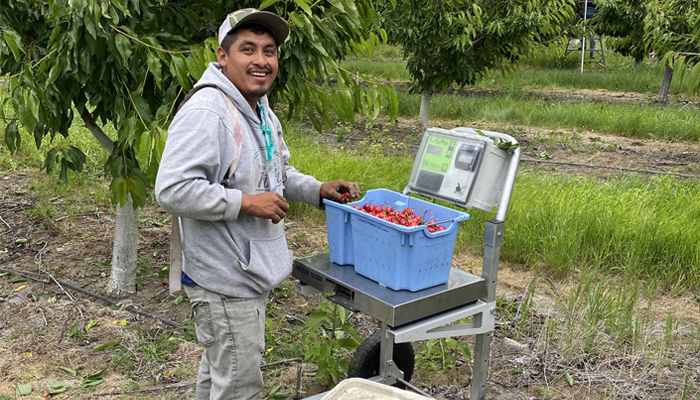I received an email this week from an organization that offers free webinars about trade and export fundamentals. The first video that piqued my interest was, “Selecting the Best Logistics Partners in Global Trade.” Two weeks ago, we shipped two pallets with 10 FairPick scales to a blueberry grower in Chile. In two more weeks, we will send five more pallets of FairPick’s down for the 2021 South American berry harvest. We would not be able to transport these harvest scales successfully without a freight forwarder--especially right now with such large shipping challenges and delays.
It is critical that shipping and customs goes smoothly for this implementation. When blueberries are ready to harvest, they will not wait for a late truck or customs clearance. Cost is an important piece of the logistics puzzle, but reliability and trust are equally important factors in this transaction. This webinar emphasized the word “partner” when choosing a global freight forwarder. The idea of finding “partners” in business versus simply suppliers or vendors is an important topic that made me reflect on how our team at 2nd Sight wants to do business.
Not every relationship has the potential to become a partnership. However, when the product or service is integral to the success of your business (like shipments to our new customer in Chile), it is important to make intentional decisions about who you work with to reach your organization’s goals. Here are some elements to consider when deciding on your next product or service supplier.
Trust
Trust is an important foundation in any personal or professional relationship. Being honest and transparent can help establish a good partnership. As a vendor, sometimes you must turn down a sale if you know the products will not meet expectations or the time frame to deliver is unachievable. Trust must be earned. Do you trust that the company is telling you the whole truth and has your back when, not if, things go awry?
Respect
Respect is another attribute, like trust, that is earned. Working with a company that aligns with your values, goals, and mission ensures a culture of cooperation. Doing the right thing should be rooted in the company’s culture. Do you feel that the company respects your time, your employees, and other stakeholders in your business transactions?
Grow Together
There is a value to a company to retain customers. Repeat business is the best kind of business, limiting the cost and time of onboarding. It is also a win for the customer to continue working with the same vendor because it keeps the learning curve low. In some cases, conceding on a short-term proposal is a necessary step in winning the long-term business and you want to work with a company that comes into negotiations with this mindset. It really comes down to helping each other when necessary so business is mutually beneficial. Will this business be able to grow and adapt to your needs in the short- and long-term?
Communicate
Mutual, regular, and constructive feedback allows partners to maintain a healthy relationship. Nothing is more frustrating than needing help and being unable to reach somebody. Poor communication leads to a lack of trust and respect. Delayed or impersonal support may make even the best product or service undesirable. As mentioned above, do you trust that this supplier will be there to pick up the phone when, not if, things go wrong?
Fair Price
The traditional bidding method to select a supplier works well when the relationship ends with the transaction’s end. However, if the product or service is an important aspect of your business that is used frequently, selecting a business based solely on the lowest price does not guarantee you will have a partner that cares about your success. Do both parties have shared risk, or “skin in the game”? Price should be a factor in considering your next partner, but make sure it is not the sole reason you selected the supplier.
At 2nd Sight, we aim to establish trust by not over-promising, being transparent with what we offer, and when we can deliver. We strive to evaluate whether our labor tracking software or nursery caliper are good fits for growers who are interested before making a sale. As a startup, it can be a challenge to emphasize that our company and team is in this relationship for the “long-haul”. We plan to be around to support our customers and products after the sale and adapt to changing times, needs, and rules. Our company values quality and reliability in every aspect of our business. And, when there is a problem, our 24/7 support line gets you to somebody who can help resolve the issue. We want to grow with our growers because we know that our farm management software can only improve with the feedback and insight from our customers who take our systems out to the farm and orchard. We hope to continue building strong partnerships with farmers in mutually beneficial business relationships.



